Chapter 3.7: Expression (Philosophical, Political, Religious, Personal)
Art has important functions in facilitating various types of human expression. Both creating and viewing art can provide us means of stating or affirming our personal and collective feelings, thoughts, ideals, and attitudes. Often we learn values and philosophical ideas and themes through artistic means.
Among the many philosophy-based art movements of the late nineteenth century was the French group who called themselves les Nabis, or the prophets. Their task as artists, they believed, was to revive ideals of painting, to prophesy modern modes, and to affirm spiritual goals by envisioning nature’s roles in life and creating a new symbolism. Among the movement’s leaders was Maurice Denis (1870-1943, France), who often depicted landscape settings imbued with biblical or mythical themes (Figure 1). His paintings are abstracted statements about his philosophies of faith and of the need for honesty in art. With willowy figural forms that were lyrically flattened in space, he asserted the two-dimensionality of the picture plane, seeking to avoid the delusions of depth and emphasizing the surface of the work and the beauty of color.
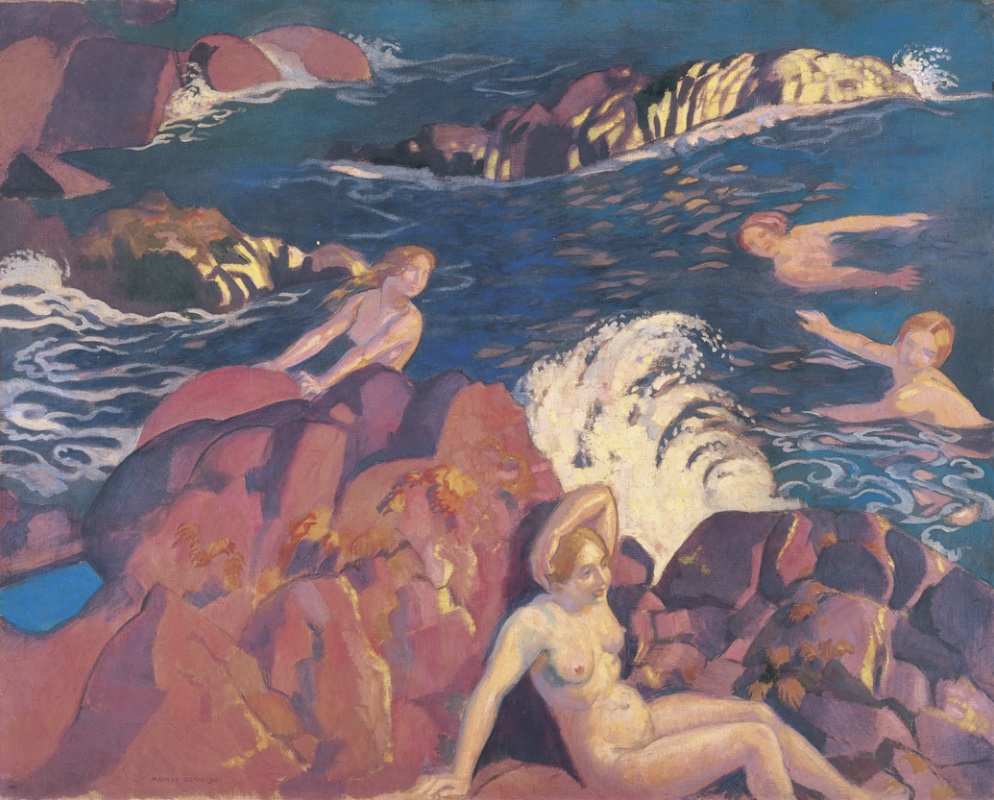
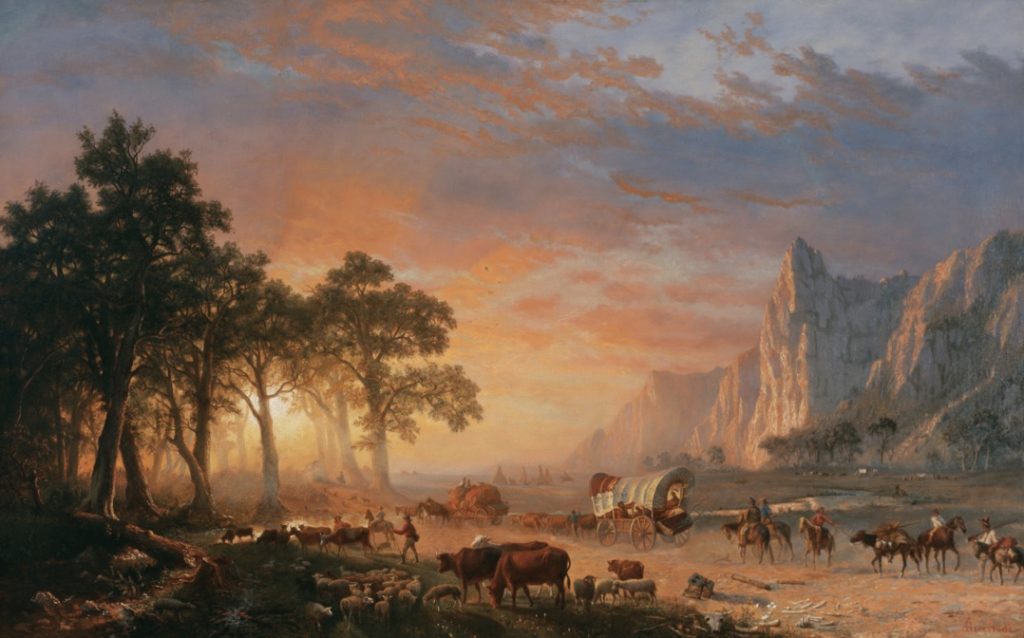
Political statements are often wed to philosophical principles in the ways that they are given artistic expression. Such was the case with grand American landscape paintings such as Emigrants Crossing the Plains by Albert Bierstadt (1830- 1902, Germany, lived in USA) (Figure 2). This painting was associated with the nineteenth-century philosophy of Manifest Destiny which promoted the idea that the assimilation of land and the use of the natural resources of the western parts of the United States were God-given rights and duties for the people who had settled here. Essentially, the settlers (who were mainly of European descent) were destined to occupy and civilize the lands from one coast to the other. This philosophy justified the political actions that took away the Native Americans’ rights and also led to the Mexican-American War (1846-1848).
The history of art is replete with instances of political statements and political propaganda, as we have seen. In ancient Rome, the Emperor Augustus not only presented himself as very young and fit in his portrait (see Figure 8 in 5.3 Styles of Art), but also promoted his political agenda through such public monuments as the Ara Pacis (Figure 3). This altar dedicated to the goddess of peace is adorned with messages about the peace and prosperity Augustus was bringing to the citizens through his many virtues and achievements, including his conquest of foreign lands, association with the Roman deities, role as chief priest, promotion of the family as the cornerstone of the empire, wisdom of the imperial/senatorial rule, and alleged ancestry leading back to the legendary founding of Rome by Romulus and Remus. All these pictorial messages served to characterize the ways that Augustus wanted his relationship to the people to be perceived. With its enclosed altar table, the Ara Pacis also carried religious messages about the practices of making sacrifices to the pagan deities, carried out by Augustus in his role as chief priest.
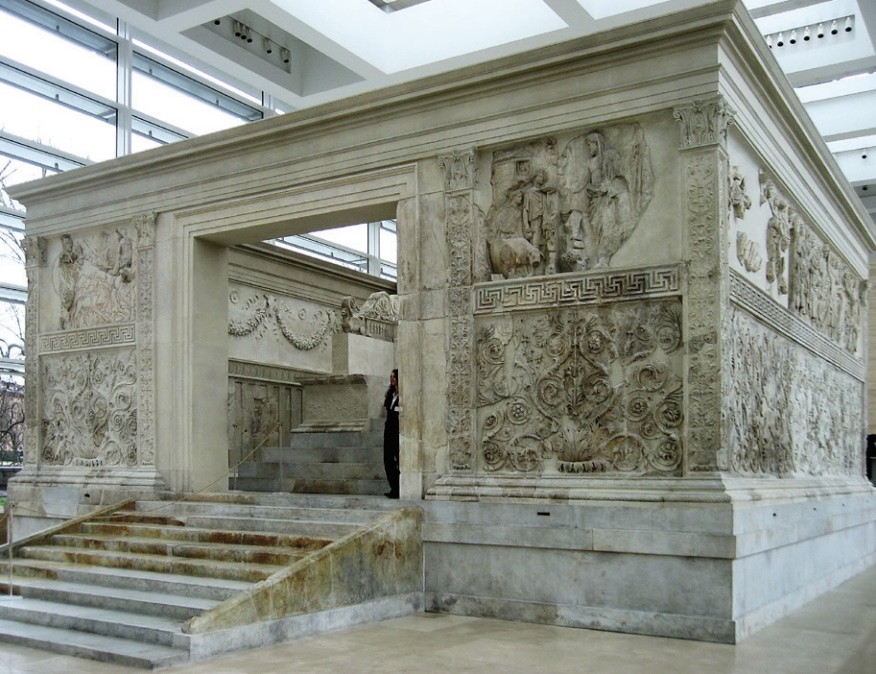
Such public artistic expressions have been common throughout time, but there have also been many statements of personal belief, sentiment, or feeling. Personal statements can also reflect on a person’s status or occupation. Painter Adélaïde Labille-Guiard (1749-1803, France) portrays herself as highly positioned in society by virtue of her own skills in portraiture and her role as a teacher (Figure 4). John Singleton Copley (1738-1815 USA, lived England) created a portrait of Mrs. Ezekiel Goldthwait that conveys her wealth and status through clothing and setting (Figure 5). At the same time, by having her reach for the fruit on the table, he alludes to her other accomplishments, including being the mother of thirteen children, a gifted gardener, and a wealthy landowner with orchards in colonial Boston.
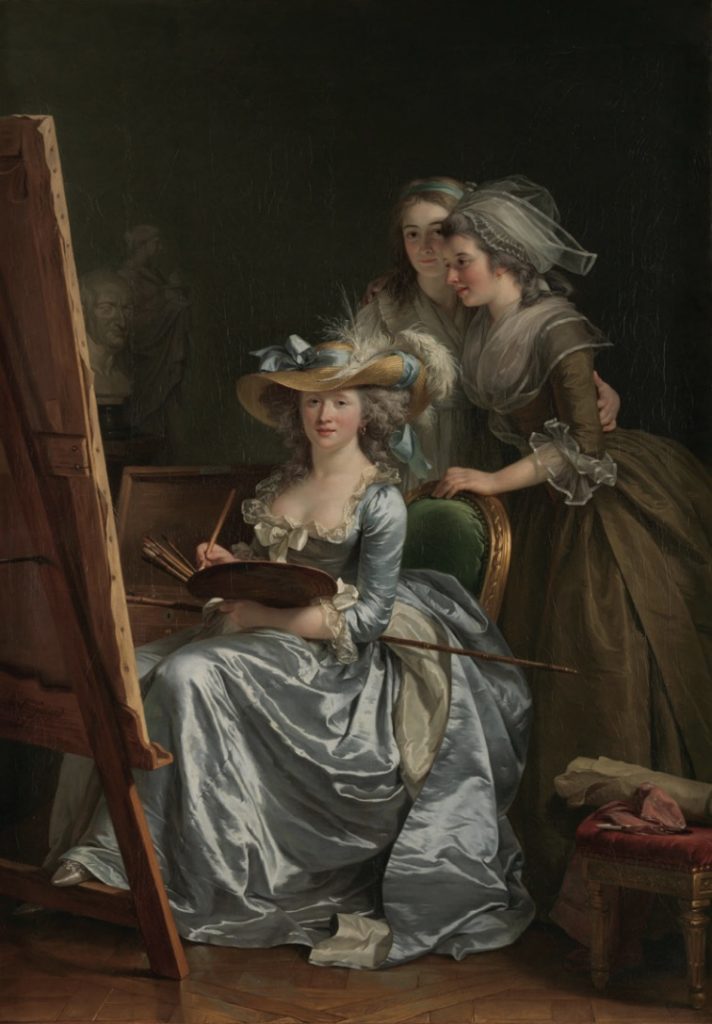
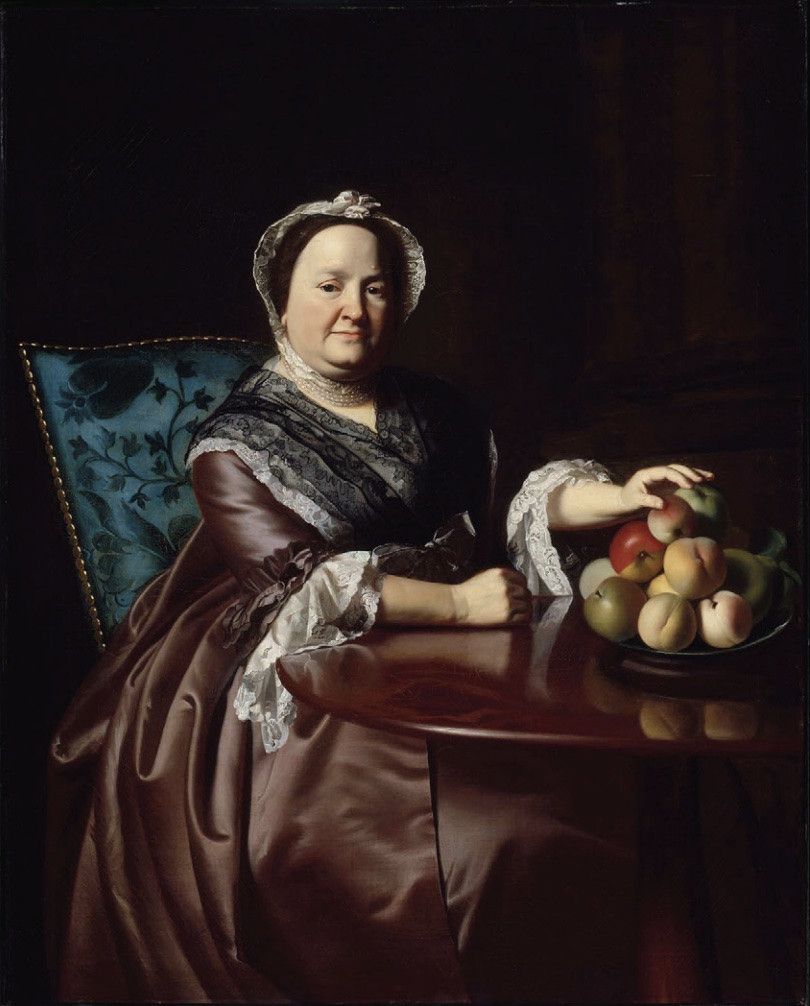
Media Attributions
- Figure 1. Wave (Artist: Maurice Denis; Author: User “Dcoetzee”; Source: Wikipedia). is licensed under a Public Domain license
- Figure 2. Emigrants Crossing the Plains or The Oregon Trail (Artist: Albert Bierstadt; Author: BOCA Museum of Art; Source: Wikimedia Commons) is licensed under a Public Domain license
- ScreenshotFigure 3. Ara Pacis in Rome, Italy (Author: User “Manfred Heyde”; Source: Wikimedia Commons) is licensed under a CC BY-SA (Attribution ShareAlike) license
- Figure 4. Self-Portrait with Two Pupils (Artist: Adélaïde Labille-Guiard; Source: Met Museum; License: OASC).
- Figure 5. Mrs. Ezekiel Goldthwait (Artist: John Singleton Copley; Source: Museum of Fine Arts Boston) is licensed under a Public Domain license
Candela Citations
- Introduction to Art: Design, Context, and Meaning. Authored by: Sachant, Pamela; Blood, Peggy; LeMieux, Jeffery; and Tekippe, Rita. Retrieved from: https://oer.galileo.usg.edu/arts-textbooks/3. Project: Fine Arts Open Textbooks. License: CC BY-SA: Attribution-ShareAlike

